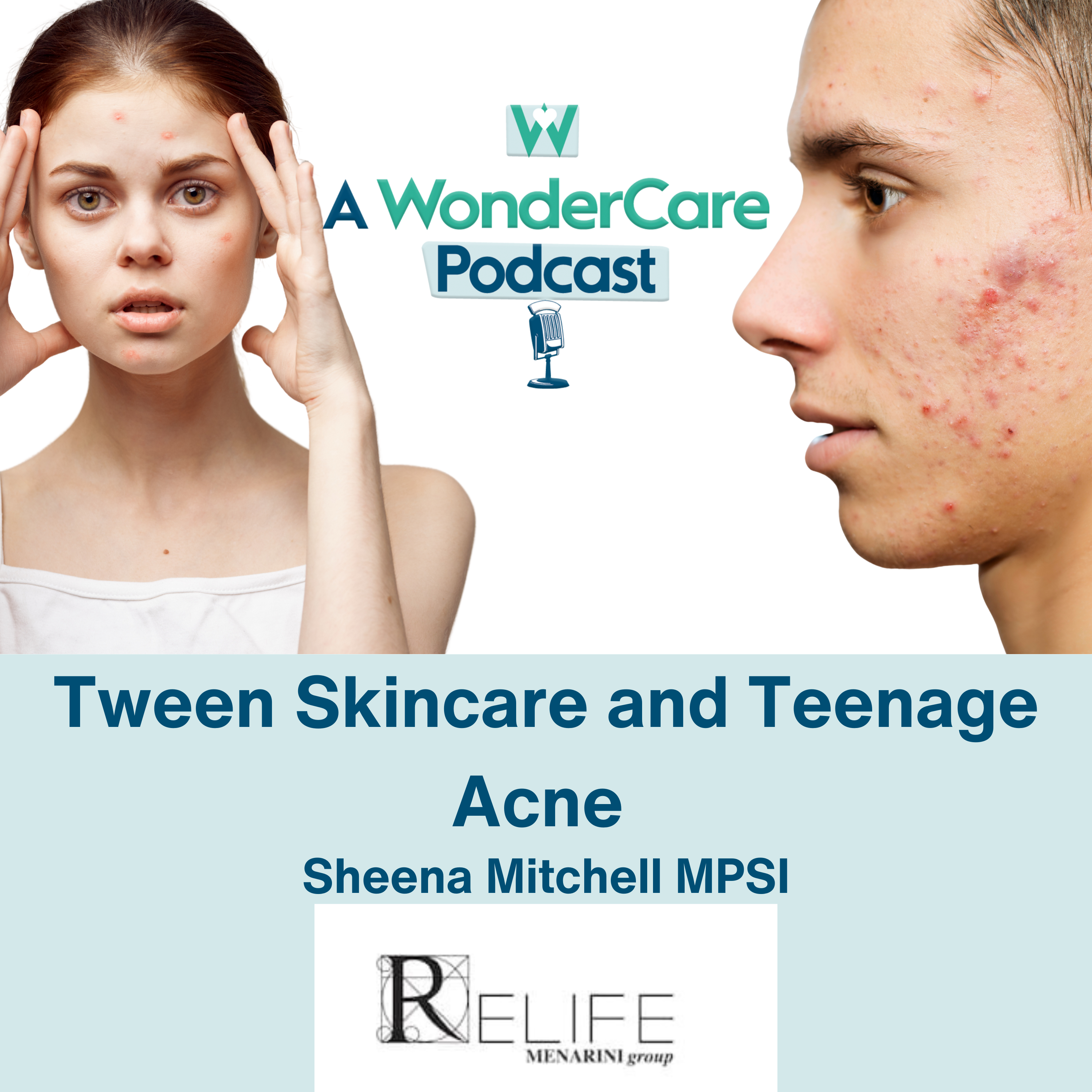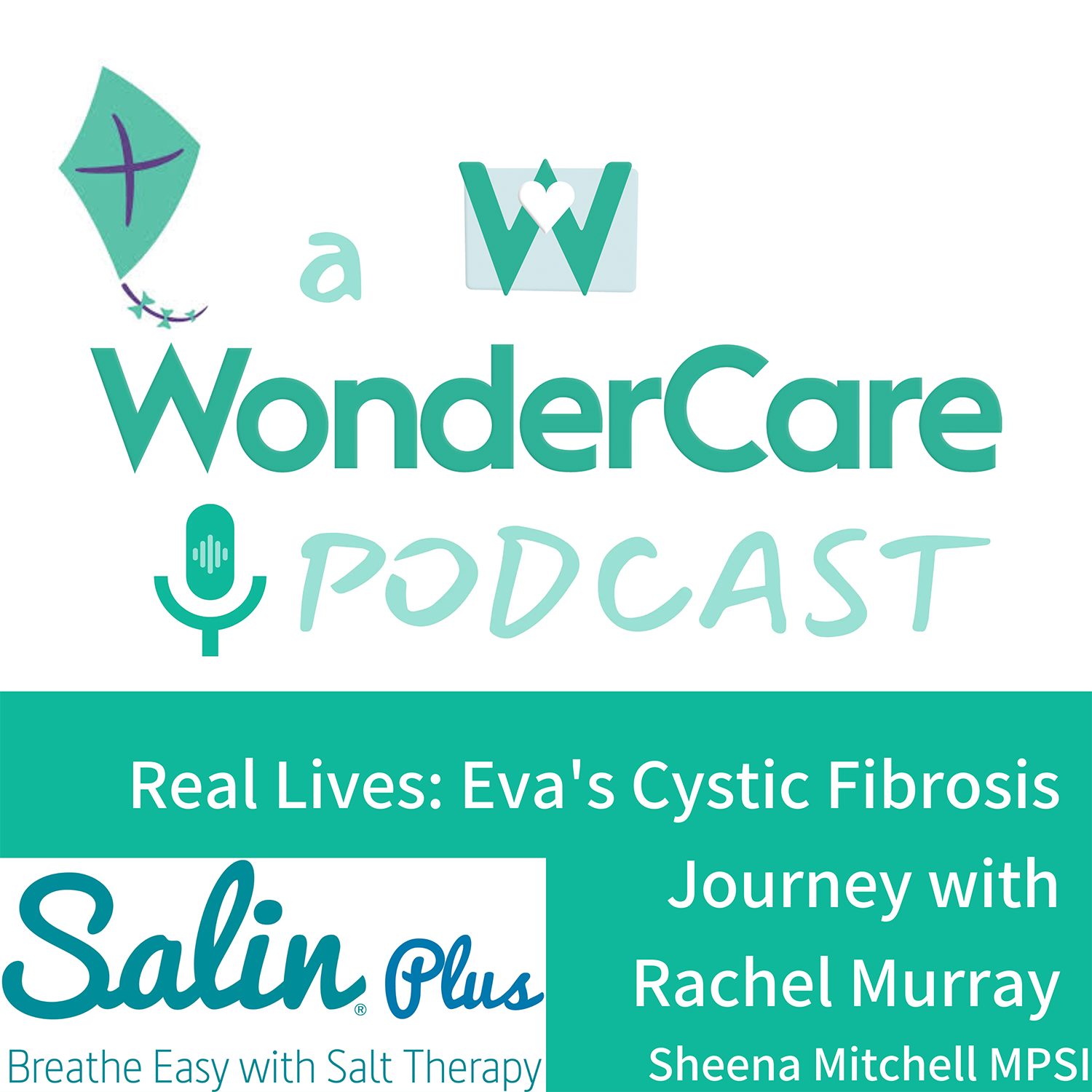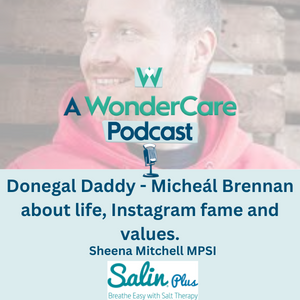Episode Transcript
Speaker 1 00:00:09 Hello, and welcome to the wonder Baba podcast. My name is Sheena Mitchell. I'm a pharmacist in mom of three. I'm here to chat all about child and family health. I come buying healthcare and practical advice to help you on your parenting journey. I really hope you enjoy the show. This podcast is proudly sponsored by Medicare fem sense. Ireland's newest and most innovative ovulation tracking solution. The Medicare fem sense smart temperature patch is comfortable and discreet and is worn under your arm during your fertile window to measure and confirm ovulation women have reported a 93% success rate in detecting ovulation with over 10,000 pregnancies already recorded coming soon in a pharmacy near you visit Fleming medical.ie/fm sense are more details. Hi, today, we're gonna be talking all about hay fever. It's that time of year again. So mostly I'm very happy to see the sun out and the flowers coming, but there is one downside, and I think we can all agree that runny noses and itchy eyes are not fun.
Speaker 1 00:01:22 So I am gonna give you all of the tips and hints on how to avoid it and how to treat hay fever from kids right up to adults. So the main symptoms are sneezing, runny nose, itchy, Woody eyes, or nasal congestion. Sometimes people can get a bit of a scratchy throat as well. It typically start February to April that's because the tree pop pollen comes out. Then from may to August, it's mostly grass pollen. And in September to October, you get the release of some fungal spores. So everyone's hay fever can be slightly different. This is because they may be allergic to different types of pollen. So some people might be worse in April and some people might be worse when the grass is out kind of June, July, August time. The best way to reduce hay fever is to avoid pollen. <laugh> easier said than done, but if possible, do stay in door.
Speaker 1 00:02:13 If the pollen count is very high, you can check the pollen count online for your locality. So it might be a case that you have the option to keep young children in, in for a day. A big trip to a local park might be a bad idea. And while it's not practical to keep children indoors, when the pollen's high, it is possible to avoid areas with lots of trees and lots of freshly cooked grass days like this, maybe a trip to the beach would be a better idea than the trip to the park. It depends on how far away you are from the beach, but it's certainly something to think about. The beach is full of nice, fresh salty air, which can actually help with, uh, respiratory symptoms as opposed to going and aggravating them by playing in a field. If you do have to go outside, consider wearing wraparound sunglasses to try and prevent any pollen coming in contact with your eyes.
Speaker 1 00:03:10 There's certain things you can do known as preventative medicines. Not all of them contain active ingredients, but there's just natural way is to prevent the pollen from making contact with your mucus membranes. So things like hay, max, which isn't a bam that contains Alovera, you can apply that around the nose and before you go out, and this helps to catch pollen before it gets into your nasal passageway, which causes an increase in his mean, which causes all of your symptoms. There is an alternative product, which is quite popular, known as hay bans its basis is in Chinese medicine and the use of acupressure. So science wise, I'm not sure, but certainly anecdotally we've had a lot of customers in the pharmacy who feel this helpful. It's just something that you wear and it is drug free, which is always good. It is worth pointing out that the hay bands are not actually suitable in pregnancy because in Chinese medicine, they particular Kai Chi pressure point that it stimulates can also be used to stimulate labor.
Speaker 1 00:04:24 So definitely want to avoid in pregnancy, but they can be used in all people over three years of age. Other than that, there are some good options such as the ster Mar stop and protect allergy response spray. So that's one that you spray up the nose and it relieves symptoms quickly by just soothing the nasal passageways, but it has the extra benefit of leaving a thin fill around the nasal patch passageway, which stops the pollen from getting in contact with your skin, which prevents the histamine reaction. Again, that's suitable from three years and is suitable in pregnancy. So that's a really good option if you're struggling while you're pregnant in the summer, another option, which is also suitable in pregnancy and breastfeeding is beco defense. And there is a kid's version of that, which is suitable from six years. So for younger kids, between three and six, it's the star Mar stop and protect.
Speaker 1 00:05:17 Other than that little tips, like shaking your jacket when you're outside, before putting it on to shake off any pollen that might have been left on your jacket from being outside, playing the day before, just make sure not to shake it inside or else you'll have lots more pollen particles floating around. Also, it's a good idea to shower and change clothes if you've been outdoors. So as soon as the kids come in, if they've been round in a field or playing outside, it's a good idea to bring them in and get them to change their clothes, get those clothes away, outta their bedroom, into the washing machine and give them a shower. And if you can wash their hair, do, uh, otherwise just maybe try and brush out any particles that are in their hair because pollen will continue to cause aggravation to the respiratory passageways and to the eyes even after you come inside.
Speaker 1 00:06:10 So you do need to kind of remove as much as you can by the same logic. Then it makes sense not to hang clothes or bedsheets outside to dry. Unfortunately it's not the most eco-friendly option or environmentally friendly, but it's probably best to use a tumble dryer for that situation or a closed horse inside. Also, I would recommend hoovering regularly trying to get all the dust particles, the, and particles up off the floors and use a dam cloth to dust around the surfaces in the living space, using a barrier moisturizer on your child, such as the LOR lip car, bam can be really helpful as well by preventing pollen from coming in contact with skin surfaces. Also, this is a tricky one, but if you have dog like myself, trying to keep the pets clean. So obviously it's one thing. Being able to bring a child in and change their clothes.
Speaker 1 00:07:04 It's a very different thing. When you've got a dog that's coming in, that's been playing and rolling around in the grass outside. You need to try and maybe even use a damn cloth to wipe the dog down at minimum and in very, very POY days, maybe even consider given the pet bath, good luck with that. So now I'm gonna move on to treatment because life gets in the way and we cannot live as hermits and we can't avoid the outdoors and nor should we have to. And the great news is there are lots of treatment options for hay fever from all ages, really? So I'm gonna run through them today. The first thing I would do if your child is over two, or if you're an adult is to take a daily antihistamine, there's lots of different antihistamine on the market. CEREC solution contains Satine and it's suitable from two years in twice daily dosing.
Speaker 1 00:07:55 So for adults, you can generally get a non one a day tablet. And there's lots of different brands such as anti hist CEREC, which both contain the same drugs at tine, or you've got the Clain, which is Loraine and other brands of that include Lara. But there's lots of antihistamine out there. It doesn't matter if you go for the branded or the generic, sometimes it can be trial and error checking out which particular drug suits you best. But for children from two years, it's ER tech solution. So a daily antihistamine can be used throughout the pollen season. It's not something that you need to hold back on. It's better to treat the symptoms and prevent them from getting worse. If a daily antihistamine isn't clearing the symptoms and just isn't doing the job, and you feel that for example, your eyes are still a little bit irritated.
Speaker 1 00:08:50 You do have lots of options. So one of the first ones that I'd recommend is TRO allergy, which is a sodium chromoly case based product. So this kind of soothes itchy in watery eyes. I like this product because it is suitable for any age. So really handy. You want to have in the house during allergy season, if you're using eyedrops on a small child, it, it can, of course be tricky if you don't have their cooperation. So the best way to put eyedrops into a child's eye or even your own is for them to tilt their head back. So maybe lying back on a couch and then with clean washed hands, you can pull down the lower eyelid slightly, and you pop the drop in there in the space that's created now, obviously, and from personal experience, that is not always possible. You could be dealing with a complete and child who has no intention of letting you put an eye drop into the open eye.
Speaker 1 00:09:51 And that's fair enough. We understand it's it's not a fun thing to do even as that else. So what I would do is reach a compromise with your child. And while they're lying back relaxing, you can actually drop the eye drop while their eye is closed. So kind of you pull a little eye drop into the area of their eye that is between their eye and their little bridge. If that makes sense. So the no side of the eye, and if you drop a little drop down there, when they open their eyes, it'll spread into the eye and give them some relief. Another eye drop, which is quite good is Aine. Andin the only thing about this one is that it's only suitable for children over 12 of years. So it is good because it contains an antihistamine and a decongestant. So if you have particularly running eyes and it's really bothering you as an adult, this is a good one to try.
Speaker 1 00:10:48 One last favorite is relatively new. It's called Upta allergy. And these come in little single dose units. So this is super to have in the handbag because it's no harm to keep one or two of these little, you know, doses for that time that you suddenly do feel your eyes are becoming irritated. These are brilliant because they're suitable from one year of age, but they're also suitable for contact lens wears so very handy. So if it's not really your eyes that are bothering you, and if it's more your nose, then there are many options. The first one I mentioned earlier, which is the stare Mar stop and protect allergy response response spray, which is suitable from three years of age. And as I said, this is good because it relieves symptoms pretty quickly. And it also leaves a film inside the mucus membranes to stop allergens, making contact with your skin.
Speaker 1 00:11:45 Another option then would be stereo Mar baby, this is good because it can be used at any age. So if they're under three, this is still an option and it just helps to wash allergens outta the nasal passageway, which will help produce irritation. Be defense is another option. This works kind of similarly to the STMI stop and protect. It's only suitable for children from six years and up though, and that's the kids' version. And they do a version for the adults. This is a really, really useful one. And I know during pregnancy, I found it a big help. When I knew I was gonna be around a particular allergen. If you've tried those more natural options and you find your nose is still irritated, even though you're taking your antihistamine and you've tried the nasal RINs, then a steroid nasal spray may be an option for you.
Speaker 1 00:12:34 So these are suitable for over 18 years and there's lots of different brands out there. Again, it's just finding the one that works best for you. There's flex a Bena court, and these are all available without prescription over the counter in your community. Pharmacy that do come with various side effects, such as irritate of the nasal passageways nose bleeds or headaches, but obviously these are not common. So in general, they're a really good, good help. It's important to note that they shouldn't be used in people who have glaucoma. When you start using a steroid nasal spray, you should really notice an improvement within seven days. If you don't have an improvement of any kind of your symptoms within seven days, then you just stop using it. But if it's working for you and you're like, okay, this is definitely improving things for me. Then you can actually continue them on for a max of six months if it's working.
Speaker 1 00:13:26 So that's good, cuz that can help to get you the whole way through the pollen season. The main thing really is that with hay fever, I always recommend a step up and tailored approach. So your base level care for kids over two years of age and adults would be taking a daily antihistamine and also avoiding pollen where possible or using the risk reduction methods. I talked about earlier, such as changing your clothes, swearing, sunglasses, hoovering, all of that kind of stuff. So take a daily antihistamine and do your avoidance measures. Obviously your child under two, can't take an antihistamine. So this is where you could use the he max spam. You can use the Opticum allergy eyedrops. You can use the ster Mar baby nasal spray, or if they're over one, you can use the optical allergy eye drops. These are all really useful and you can tailor the treatment to your child's worst symptoms.
Speaker 1 00:14:22 So you can treat the nose or the eyes and by effect really when you're treating one, it does tend to help the other. So it's all about reducing the contact between the pollen and your nasal passageways or in your eyes. Other than that, then if a child reaches three years of age, they can add in stem or stop and protect or hay bands. Again, maybe not everyone will make a big difference for your child, but they're certainly worth a try. Once your child hits 12, you are able to use the Vene Ansin eyedrops, which contain the antihistamine and decongestant. Some people find them more effective. And once your child hits 18 years of age or any adult who does not suffer with glaucoma can use a steroid nasal spray. So that's your flex nasal be a court. So that really is my very brief summary of all of the different types of hay fever treatments. There are available in Ireland at the moment. Obviously, if you've any questions you can get in touch through the Wonderbar, Facebook or Instagram pages. And I really hope that this podcast has been useful. A nice quick one for change for me. If you're enjoying the podcast, I'd really appreciate if you could subscribe. Thank you so much. Talk to you soon.


